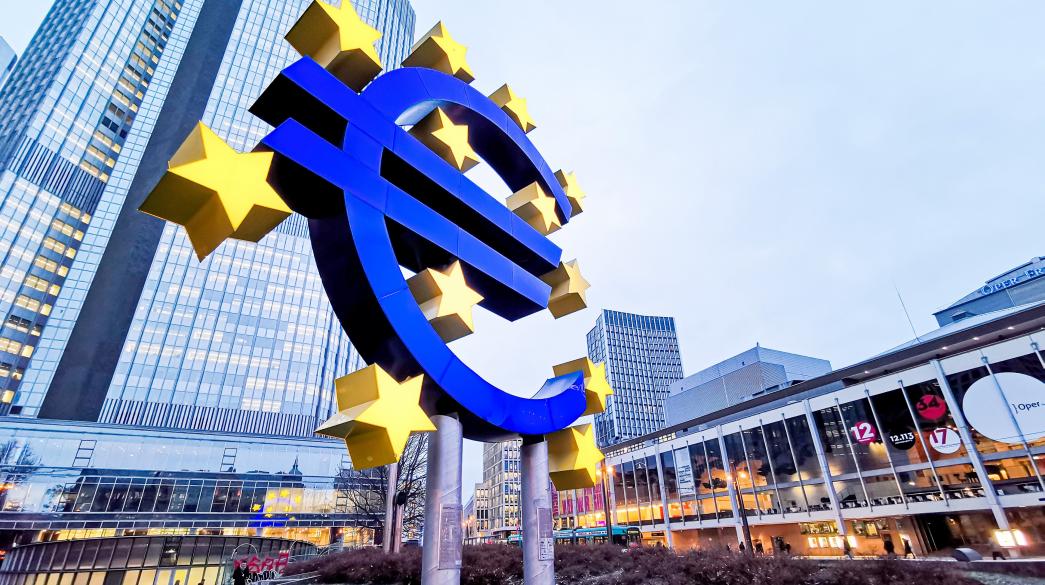An unprecedented liquidity injection, not only exceeding 41 billion euros but offered with a negative interest rate, was accepted by Greek banks from the European Central Bank in 2020, as part of measures to address the economic fallout from the pandemic.
This liquidity helped, to some extent, banks increase lending, as was the purpose of the ECB program, but it was largely recycled into Greek, talian, Spanish and Portuguese government bonds. That is, the liquidity has not been channeled into the real economy: businesses and households. It is also worth noting that the liquidity of banks has been significantly enhanced by the ECB but also by an increase in deposits, which exceeded 20 billion euros in the pandemic.
The unorthodox way in which the banks use the abundant liquidity provided by the special program of long-term lending for the pandemic (PELTRO) led Bank of Greece governor Yiannis Stournaras, to call for an increase in lending. "I would like to see the banks give more credit," Stournaras said on Sunday (on ANT1's "Special Report" show). "And to see more credit because, firstly, they have received a very large increase in deposits, and secondly and most importantly, the Eurosystem, ie the European Central Bank and the national central banks - including the Bank of Greece (BoG) – has lent to banks at a subsidized interest rate, in all over Europe and Greece, in order to see them issue more loans to the private sector as well," he stressed.
According to fourth quarter figures published by the Single Supervisory Mechanism of the ECB (SSM), the liquidity that Greek banks had drawn from PELTRO amounted to 41.36 billion euros. The financial statements published by the banks show that they all used this liquidity to the same extent, as a percentage of their assets. In particular, Alpha Bank raised 11.9 billion euros (17 percent of assets), Eurobank 8.02 billion euros (11.8 percent of assets), National Bank (NBG) 10.5 billion euros (13.6 percent of assets) and Piraeus Bank 11 billion euros (15.4 percent of assets).
In contrast to previous loans from the Extraordinary Liquidity Facility (ELA), which were provided to banks with high interest rates, the loans of the PELTRO facility are provided at a negative interest rate, ie the ECB pays the banks to lend to them. This mechanism works as follows: initially the loan from the ECB is granted with the same negative interest rate (-0.25%) that exists for the acceptance of bank deposits by the ECB. In the end, however, the ECB raises the negative interest rate to -1 percent for those banks that keep at least the balance of the loans they have been granted stable. That is, banks are not even asked to increase lending to get the "bonus", simply not to reduce it.
Theoretically, a bank can take this liquidity and re-deposit it with the ECB and safely remove the interest rate difference from -0.25% to -1%. Greek banks used their liquidity in more profitable ways, to give loans covered by government guarantees by 80 percent (Development Bank program), or to increase their placements in government bonds.
SSM figures on bank placements are revealing: At the end of 2020, Greek systemic banks held Greek government bonds worth 28.895 billion euros in their portfolios. At the same time, however, they had made a big opening in the European region's bonds: the SSM recorded 5.328 billion euros in Italian bonds, around 2 billion euros in Spanish bonds, 1.315 billion euros in Cypriot bonds and 259 million euors in Portuguese bonds. In total, the value of government bonds held by Greek banks reached 43.963 billion euros.
Why banks won’t lend
Banks appear unwilling to take on new risks by using every aid, every weapon, in one direction only: the consolidation of balance sheets by drastically reducing non-performing loans. With the subsidized liquidity of the ECB, banks drastically improve the cost of money, boosting their revenues, while at the same time making profits from bond purchases - profits that are used to back NPL sales.
On their part, banks also point to the structure of the business environment dominated by micro-enterprises: of the 830,000 enterprises operating in the country, 810,000 are very small, employing an average of 1.7 employees. In other words, the vast majority of businesses concerns the self-employed, who are unable to complete large investments and obtain bank financing. According to bank official, in recent years, although the crisis has changed a lot in the economy, the necessary transformation has not taken place to create larger and healthier businesses.
Credit expansion picks up
Although the growth of credit expansion in 2020 is not in line with the huge liquidity boost they received from the ECB and the increased deposits, BoG figures show a considerable acceleration. As explained by the BoG, what prevented the banks from converting liquidity into more new loans is the fear of new problem loans arising.
According to the central bank, credit expansion accelerated in 2020 compared to 2019. The annual growth rate of bank financing to the private sector was 1.2 percent on average in 2020, compared to a negative rate of -0.4 percent in 2019.
NONTAS CHALDOYPIS









